Abstract
The comparative in vitro activity of SM7338 was tested against 670 routine clinical isolates and 130 cefoperazone-resistant isolates of bacteria by agar dilution methods. SM7338 was at least as active as imipenem against gram-negative organisms but was slightly less active against gram-positive organisms. SM7338 was particularly active against members of the family Enterobacteriaceae, with MICs for 90% of strains of less than or equal to 0.125 micrograms/ml for all species tested. Differences in activity between SM7338 and imipenem were particularly striking against Proteus vulgaris, Proteus mirabilis, and Morganella morganii, against which MICs of SM7338 and imipenem for 90% of strains were 0.125 and 4 micrograms/ml, respectively. The presence of unique plasmid-mediated beta-lactamases in Pseudomonas aeruginosa PU21 transconjugants did not affect activity substantially, except in the case of OXA-2 (eightfold-increased MIC) and OXA-3 (fourfold-increased MIC). SM7338 was also active against a laboratory-derived strain of P. aeruginosa which hyperproduced chromosomal beta-lactamase, inhibiting both the wild type and the mutant at a concentration of 1.0 micrograms/ml.
Full text
PDF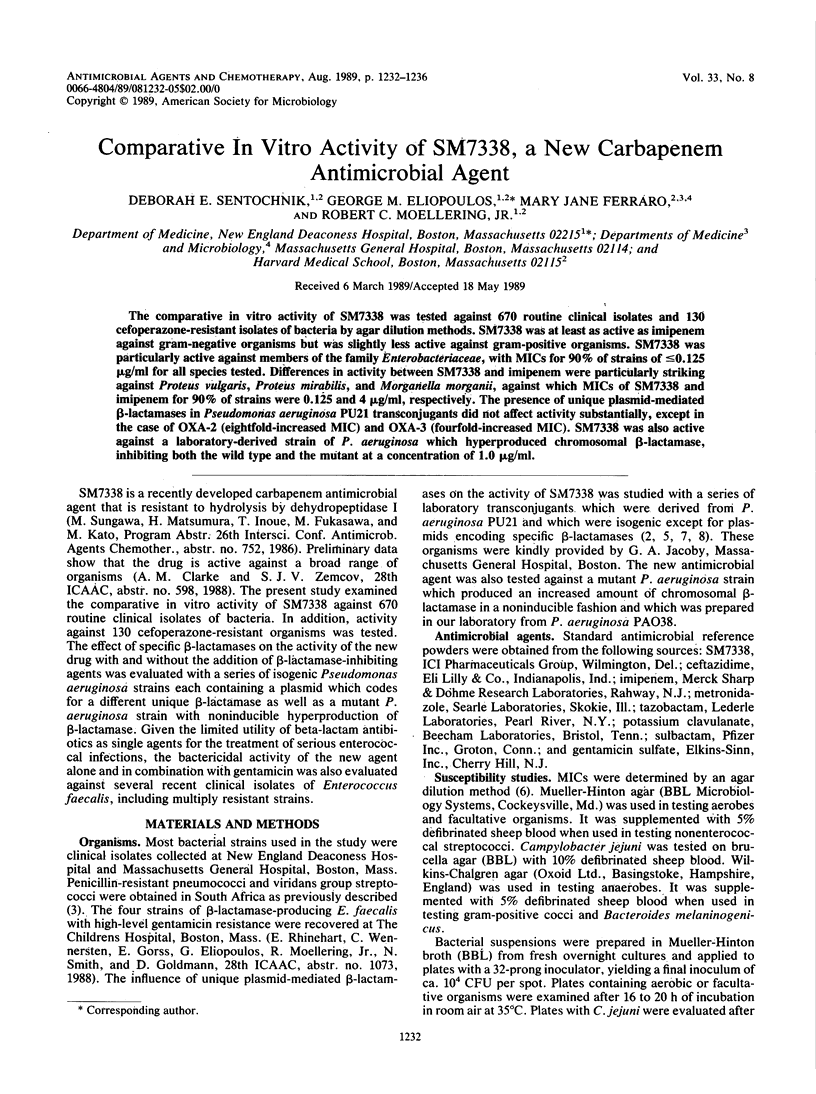
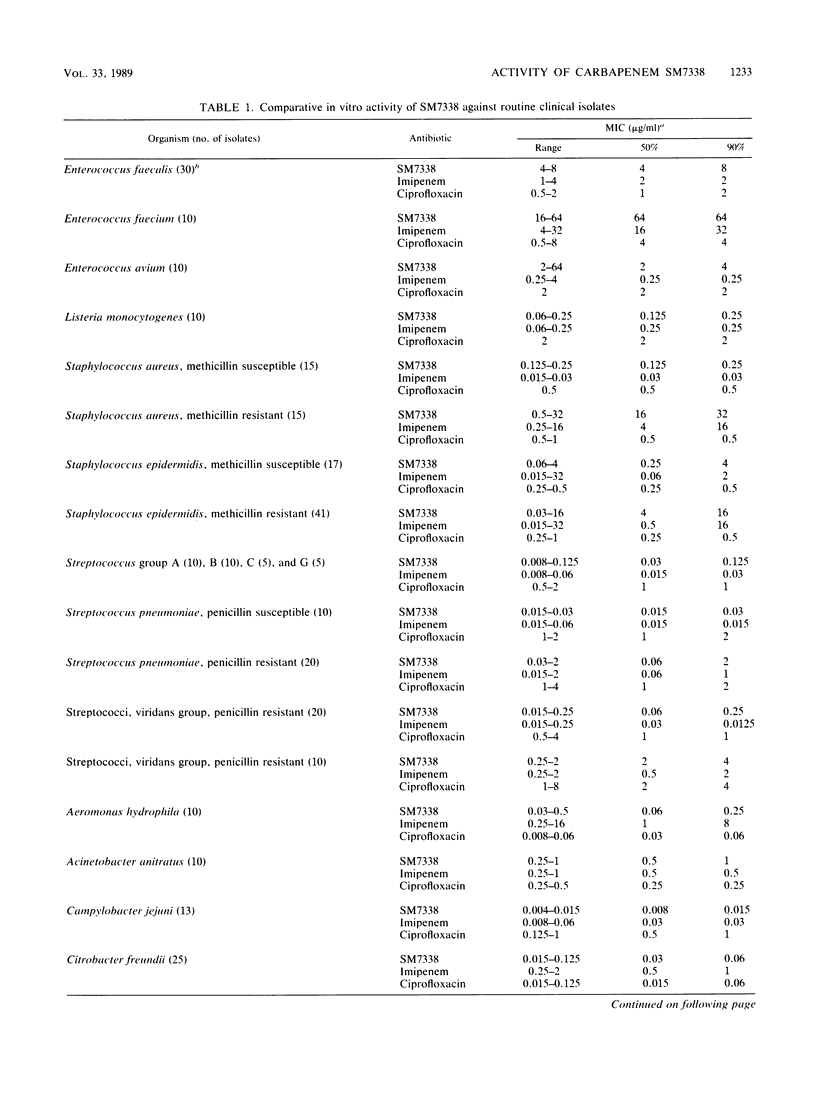
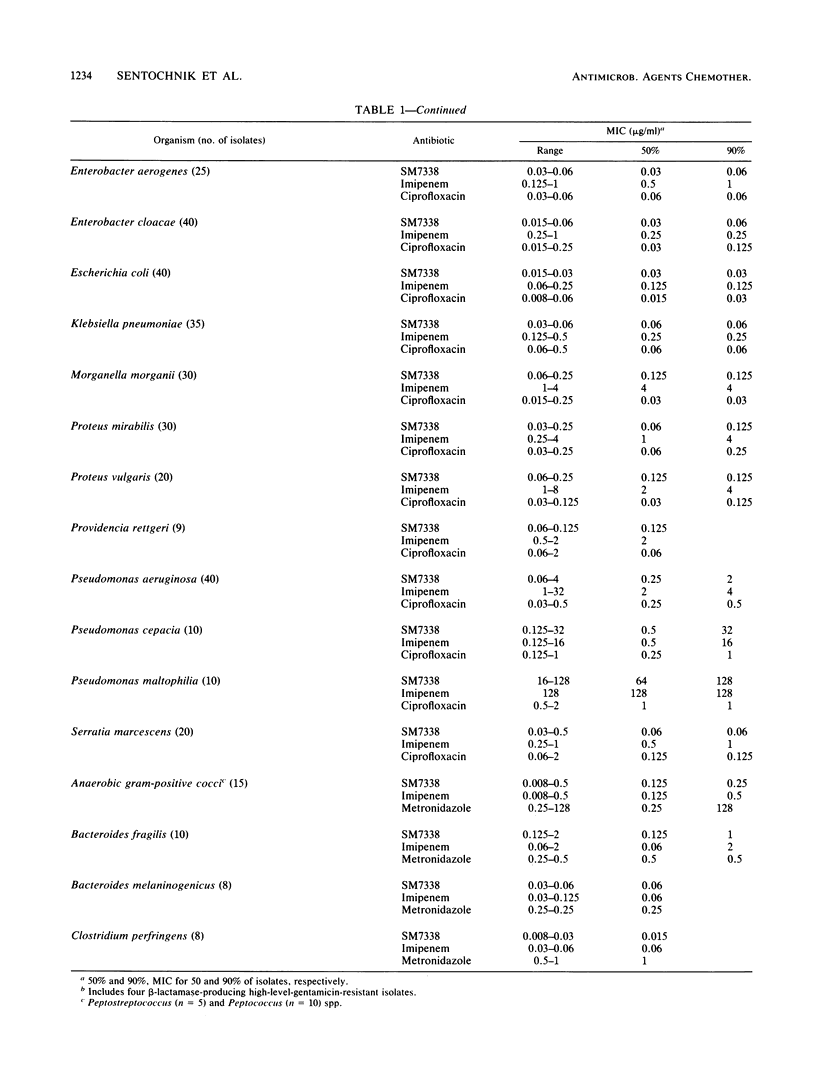
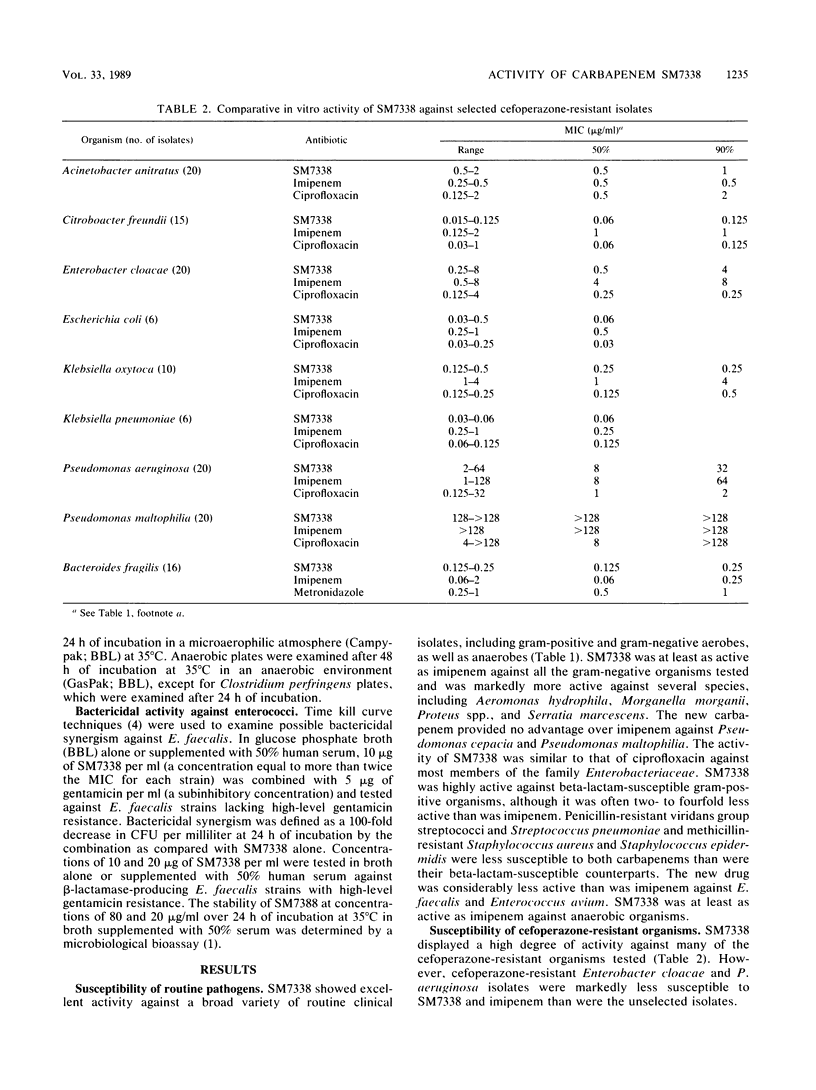
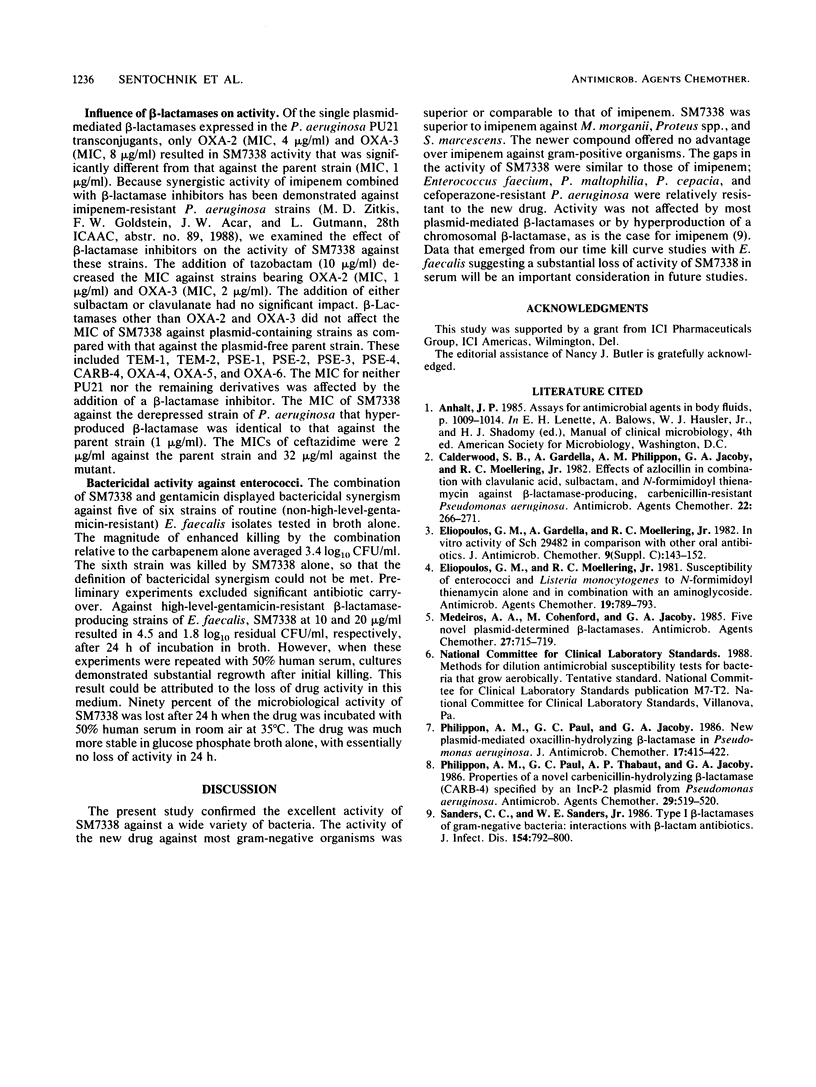
Selected References
These references are in PubMed. This may not be the complete list of references from this article.
- Calderwood S. B., Gardella A., Philippon A. M., Jacoby G. A., Moellering R. C., Jr Effects of azlocillin in combination with clavulanic acid, sulbactam, and N-formimidoyl thienamycin against beta-lactamase-producing, carbenicillin-resistant Pseudomonas aeruginosa. Antimicrob Agents Chemother. 1982 Aug;22(2):266–271. doi: 10.1128/aac.22.2.266. [DOI] [PMC free article] [PubMed] [Google Scholar]
- Eliopoulos G. M., Gardella A., Moellering R. C., Jr In-vitro activity of Sch 29482 in comparison with other oral antibiotics. J Antimicrob Chemother. 1982 Feb;9 (Suppl 100):143–152. doi: 10.1093/jac/9.suppl_c.143. [DOI] [PubMed] [Google Scholar]
- Eliopoulos G. M., Moellering R. C., Jr Susceptibility of enterococci and Listeria monocytogenes to N-Formimidoyl thienamycin alone and in combination with an aminoglycoside. Antimicrob Agents Chemother. 1981 May;19(5):789–793. doi: 10.1128/aac.19.5.789. [DOI] [PMC free article] [PubMed] [Google Scholar]
- Medeiros A. A., Cohenford M., Jacoby G. A. Five novel plasmid-determined beta-lactamases. Antimicrob Agents Chemother. 1985 May;27(5):715–719. doi: 10.1128/aac.27.5.715. [DOI] [PMC free article] [PubMed] [Google Scholar]
- Philippon A. M., Paul G. C., Jacoby G. A. New plasmid-mediated oxacillin-hydrolyzing beta-lactamase in Pseudomonas aeruginosa. J Antimicrob Chemother. 1986 Apr;17(4):415–422. doi: 10.1093/jac/17.4.415. [DOI] [PubMed] [Google Scholar]
- Philippon A. M., Paul G. C., Thabaut A. P., Jacoby G. A. Properties of a novel carbenicillin-hydrolyzing beta-lactamase (CARB-4) specified by an IncP-2 plasmid from Pseudomonas aeruginosa. Antimicrob Agents Chemother. 1986 Mar;29(3):519–520. doi: 10.1128/aac.29.3.519. [DOI] [PMC free article] [PubMed] [Google Scholar]
- Sanders C. C., Sanders W. E., Jr Type I beta-lactamases of gram-negative bacteria: interactions with beta-lactam antibiotics. J Infect Dis. 1986 Nov;154(5):792–800. doi: 10.1093/infdis/154.5.792. [DOI] [PubMed] [Google Scholar]


